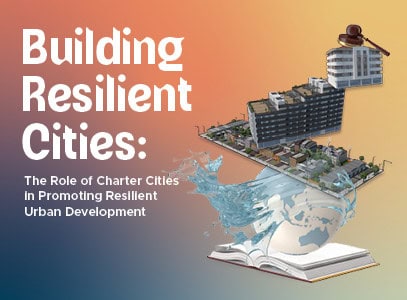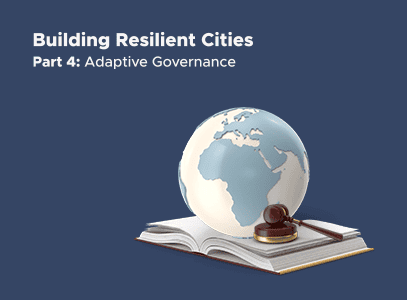See the original article on the magazine Reason’s website here.
Once upon a time, a man named Walt wanted to build a city—nay, a kingdom—in Florida swampland.
In 1964, the Disney company began secretly purchasing 27,400 acres in small parcels and stitching them together to form a landmass roughly the size of Manhattan. Walt Disney wanted plenty of space to keep the type of tacky tourist shops that encircled Disneyland—plopped in the middle of Anaheim, California—from encroaching on his new kingdom.
“There’s enough land here [in Central Florida] to hold all the ideas and plans we could possibly imagine,” Disney said in a filmed presentation that was aired for local lawmakers as part of a bid to convince them that his extraordinary dream required extraordinary powers: Total control over the land so that politics couldn’t interfere with Disney World’s development.
The centerpiece of Disney’s pitch was EPCOT, the Experimental Prototype City of Tomorrow, which a narrator in the presentation describes as a “dynamic, urban center” featuring a “variety of activities found only in metropolitan cities,” which would eventually be home to 20,000 residents.
Though he passed away in 1966 before the plan came to fruition, Walt Disney got his wish. The year following his death, local lawmakers approved the creation of the Reedy Creek Improvement District, a remarkable experiment in private governance that has thrived for the past 55 years.
Enter Ron DeSantis.
“Disney should not run its own government,” Florida’s Republican governor said at an April 25 press conference.
In March, Disney CEO Bob Chapek issued an internal memo stating that the company opposed a law that was recently passed in Florida banning public school classroom discussion or instruction about sexual orientation and gender identity in grades K–3.
DeSantis, whose office didn’t respond to our interview request, reacted by dissolving the Reedy Creek Improvement District as of June 1, 2023, which would bring this half-century experiment in semi-privatized governance to an end.
Walt Disney’s project in Florida was in part inspired by the futuristic vision of the 1964 World’s Fair, overseen by his personal friend, Robert Moses. The company had showcased future EPCOT attractions there, such as the People Mover and Carousel of Progress. It later hired the executive vice president of the World’s Fair to oversee the construction of Disney World.
Disneyland California became “a social center, a center of national and international tourism,” according to Austrian-born L.A.-based urban designer Victor Gruen, who was also the visionary behind the indoor shopping mall. He called it a prime example of cellular urbanism, where a dense pedestrian-friendly central business district is the “heart” of the city, with arteries running into it from the outer residential and recreational areas.
Walt Disney, who reportedly kept a copy of Gruen’s book The Heart of Our Cities on hand, wanted his Experimental Prototype Community of Tomorrow to be a showcase of the first true cellular city.
“EPCOT will always be a showcase to the world or the ingenuity and imagination of American free enterprise,” said Disney in his filmed presentation.
While EPCOT never became the functional city of 20,000 residents that the company had promised, the free rein that the Reedy Creek Improvement District gave Disney over the development of its land resulted in a city-sized network of attractions that have had a profound influence on urban planning.
Disney has inspired planned communities, not to mention competing theme parks, throughout Florida, which has more than 1,200 special governance districts.
The company built and maintains a vast transportation infrastructure, including a monorail system that carries about 150,000 guests a day connecting with a network of buses, shuttles, trams, cable cars, and boats to move guests between its four theme parks, two water parks, shopping and recreation centers, sports complex, campground, and more than 25 resort hotels.
Disney World’s governance model was also influential as a strategy for dealing with the red tape endemic to local planning boards. Moses exemplified one model of circumventing local politics: He never held elected office, yet remade the landscape of New York through his control of the state’s powerful public agencies, empowered to borrow money and seize land through eminent domain. And Moses had little accountability, so he bulldozed neighborhoods and nearly flattened Manhattan’s SoHo with an expressway.
While Moses ran roughshod over established communities, Disney opted to build a new economy in Central Florida on mostly undeveloped land with his strategic real estate purchases and special district exempting him from the politics of zoning and land use regulation.
“We think the need is for starting from scratch on virgin land and building a special kind of new community,” Walt Disney told Florida lawmakers in his presentation.
The result was a more effective model of governing land use: Because the Reedy Creek board is appointed and funded by a company with an incentive to create a highly functional design, the project met the needs of its customers, i.e., hundreds of thousands of daily guests visiting and lodging at the property while keeping costs in line.
“Disney has benefited from the Reedy Creek improvement district because it gets to control everything, says Richard Foglesong, author of Married to the Mouse: Walt Disney World and Orlando, the definitive history of the Disney corporation’s relationship with Florida’s government. “I call it ‘the Vatican with mouse ears.'”
He says that the company’s special jurisdiction insulated it from county planning department interference, which is what made Disney World’s distinctive architecture possible.
“They were building Cinderella’s castle 278 feet high made of fiberglass,” says Foglesong. “You wouldn’t find a provision for that…in a building code.
But creating unique building codes didn’t mean skimping on safety. Disney hired a nationally recognized building code expert as well as a former general in the Army Corps of Engineers to oversee Disney World’s construction.
“They wanted to make sure that the tourists who come here are safe. Otherwise, they might sue,” says Foglesong. “So there was a financial incentive for the Disney company to conduct its inspections honorably and responsibly. And they weren’t sure they would get that from a municipal government.”
Legally, the Reedy Creek Improvement District started as a special drainage district so that the company would have municipal authority to empty the swamp that it planned to build over. But with approval from the state legislature, it morphed into a full-fledged government with its own fire department, hospital, water, and power systems, and even the right—though never exercised—to form its own police department. It had the authority to build a nuclear power plant within the district, which it never pursued, perhaps because that would have invited onerous federal regulation.
What’s remarkable is how fast Disney’s dream came together: The company transformed 2,500 acres of undeveloped swampland into the Disney World complex in just four years.
The Magic Kingdom opened to the public on October 1, 1971.
Disney World also inspired future experiments in private governance, including a variety of attempts to build charter cities run by private corporations in Central America and African countries with the goal of spurring economic growth by preserving personal liberty.
“Disney World in some ways has a lot of similarities with charter cities,” said Mark Lutter, president of the Charter Cities Institute on a podcast, also noting that Disney did fall short of its stated goal to build a revolutionary charter city. “Disney World does show this mechanism of devolving authority and market mechanisms being reasonably effective.”
Internal documents that Foglesong discovered in the Disney archives in Burbank, California, show that Walt Disney was adamant in the early stages of development that no permanent citizens reside in the Reedy Creek Improvement District, which was a way of keeping a democratically elected government at bay.
“They were afraid of democracy,” says Foglesong. “They well understood that if people actually lived in the district…they would be able to vote there. And Walt didn’t want that. They wanted planning and zoning authority, but not at the cost of having real residents who could vote there.”
Disney did create two adjacent residential cities, Bay Lake and Lake Buena Vista, with a combined population of little more than 50 permanent residents who get to elect the local government officials. Voters must own an acre of land in the district to participate in the Reedy Creek elections. Those voting-eligible residents, says Foglesong, are all trusted, long-term Disney employees.
“So those are like company towns,” says Fogelsong. The arrangement “makes it possible to do things that would not be possible in the real world.”
Disney was so protective of Reedy Creek’s autonomy that when former CEO Michael Eisner created the residential city of Celebration on the property in 1996, he actually de-annexed it from the Reedy Creek Improvement District prior to residents moving into their homes so as not to risk the intrusion of politics.
Such intrusion of politics into semi-autonomous zones was on display earlier this year in Honduras, a country hobbled by bureaucracy, corruption, and weak property rights. In 2013, Honduras had passed a national law authorizing autonomous zones that could be run by private companies, which paved the way for several attempts to build charter cities protected from local politics. But after the election of the democratic socialist Xiomara Castro earlier this year, the government repealed that law, undermining the charter city movement.
And this underscores one of the hazards of building private cities: Their autonomy is vulnerable to the whims of populist politicians from the left and the right.
When DeSantis signed the Parental Rights in Education bill into law in March 2022, a national media firestorm ensued. Critics had dubbed the bill the “Don’t Say Gay” law, arguing that it would potentially punish school staff who even acknowledged the existence of gay or transgender identities.
The text of the law says that “classroom instruction by school personnel or third parties on sexual orientation or gender identity may not occur” in grades K-3 and that school personnel may only broach the subject in older grades in a manner “age-appropriate or developmentally appropriate” as determined by standards that the Florida Department of Education will set.
Disney, a famously LGBT-friendly company, responded to employee complaints with a letter from Chapek issuing an apology for the company’s silence during the debate over the bill, calling the new law a “challenge to human rights,” promising to donate corporate funds to “combat similar legislation in other states” and pause “all political donations in the state of Florida.”
DeSantis and his allies in the state legislature then targeted Reedy Creek.
“Reedy Creek gives [Disney] a competitive advantage that their competitors do not have,” says state Rep. Randy Fine, a Republican, who introduced the bill dissolving Reedy Creek in the Florida House. “Disney announced they were going to use the special privileges that the state had given them to make it a priority to repeal a bill that we never passed: The supposed ‘Don’t Say Gay’ bill. We thought that was a little bit out of line, and that created this groundswell of support to start to take a look at things like this.”
Reedy Creek does grant Disney some advantages beyond streamlining zoning and building codes: The district can issue tax-exempt bonds to finance infrastructure improvements on the property, and Disney doesn’t incur the same improvement fees when it develops its land that other companies operating under more traditional governance structures in Florida do.
But the company covers the cost of its own municipal services by paying, as of 2022, $164 million in annual taxes to Reedy Creek on top of the property taxes it pays the counties, and it reimburses the local sheriff’s department for its presence on the property.
Foglesong says Walt Disney wasn’t after tax breaks.
“Through the [Reedy Creek Improvement District] the Disney Company, believe it or not, taxes itself to be able to produce particular public services and build particular infrastructure that are specific to its own needs,” says Foglesong. “The company clearly wants to retain those powers…not because it’s money-saving for them, but rather because it produces efficiency for them.”
Fine tells Reason that he rejects “the premise that [dissolving Reedy Creek] was retaliation” by Florida’s GOP-controlled government against Disney but that “when you kick the hornet’s nest, sometimes issues pop up.”
“What has been going on here is, I believe…woke leftists have just simply bullied [large corporations], screamed and yelled and thrown temper tantrums. And so companies go, ‘What’s the path of least resistance? Fine, fine, fine. We’ll throw you a bone,'” says Fine. “Well, they’re now learning in Florida, there’s a cost to doing that.”
He also says that Florida will look like a more attractive state for investors when Disney gets the same treatment as all its competitors and that it’s irresponsible to allow a company to accrue what he calls “government debt.”
But unlike normal municipal bond debt that’s typically repaid through taxation of local residents, Reedy Creek’s bonds have been backed by the revenue of the Disney company, though that could change if the district is dissolved.
Florida’s Orange County tax collector estimates the dissolution could lead to a 15–20 percent property tax increase in the county to compensate bondholders for Reedy Creek’s more than $1 billion debt and cover the millions of dollars of annual expenses in maintaining the property’s infrastructure.
“I don’t see how the governor and the state legislature…are going to be able to finalize this step to dissolve the Reedy Creek Improvement District and not leave taxpayers and voters having to compensate the Disney company,” says Foglesong.
Fine says that Orange and Osceola counties could set up their own special taxing districts to target Disney and make up for the shortfall. DeSantis has suggested absorbing Reedy Creek into the state government to continue extracting Disney’s money.
Foglesong expects that Disney and the state of Florida will reach a compromise to save Reedy Creek before the June 2023 deadline.
“There are…too many children for this divorce to occur. The Reedy Creek Improvement District, in my opinion, is something like a prenuptial agreement that protected Disney’s powers into the future,” says Foglesong.
But Fine says the fact that Disney never turned EPCOT into a city of 20,000 residents as promised means that “the marriage was created on false pretenses.”
“We’re not interested in getting in the way of free speech, but when a visitor to our state says, we’re going to use special privileges that we’ve been given to retaliate….That’s a slap in the face to the people of Florida, and we’re not going to put up with it,” says Fine.
If Disney is indeed a visitor to Florida, it’s made the kind of long visit that lasts more than half a century. Fine maintains that the company was “acting like a visitor” by demanding that Floridians “accept [their] California values in the state of Florida.”
“A Florida company wouldn’t have done this,” says Fine.
So, if Reedy Creek is dissolved, what’s the legacy of Walt Disney’s dream city built from scratch on a Florida swamp?
It’s true that no other company was ever able to secure the kind of autonomy that Disney did in Florida, though special districts proliferate throughout the state, and a more libertarian state legislature might even consider giving the “Disney deal” to other landowners.
Disney has created a world-class destination, contributing to Florida’s status as the top international tourist destination in the United States, as DeSantis’ press secretary recently boasted. Disney World has also served as a model of land use studied worldwide by businesses and governments.
Even though handing control over a large swath of land to a private company may annoy local politicians resentful of relinquishing even a micron of power, the results speak for themselves. The Reedy Creek Improvement District, in its half-century of life so far, has offered a glimpse of what’s possible when land development is governed by a private company with a long-term stake rather than the political whims and interests of elected officials.
“Disney World is in many ways the city dedicated to free enterprise,” says Fogelsong. “Without residents, true. Without democracy. But with a reliance on a private corporation to efficiently provide public services. So it is kind of amazing that self-described conservatives now would want to take away from a well-known and pretty beloved company the ability to privatize public services and to deregulate.”
Or, as Walt Disney put it in his closing remarks in the presentation aired for Florida lawmakers in 1967:
“We can create right here in Disney World, a showcase to the world of the American free enterprise system. I believe we can build a community that more people will talk about and come to look at than any other area in the world.”







